Varieties and classification of Italian millet
Italian millet (mogar) is the most important fodder crop. It has highly nutritional properties and a high content of vitamins. Mogar is used in the alcohol industry and in the production of vinegar. Can Italian millet be used in food? What is culture and how can it be useful to the modern consumer? You will find detailed answers to these questions in our article.
What is Italian millet
Italian millet – it is an annual cultivated plant of the grass family. Belongs to the species Italian foxtail (Setaria italica). Mogar (Moharicum) is a cultivated variety of this plant.
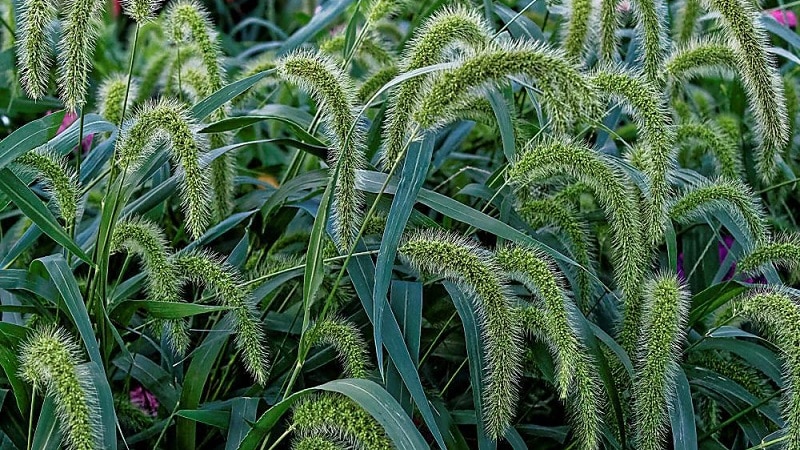
Description and characteristics of the plant Mogar (Italian bristlecone)
This is a dense shrubby plant that forms a closed herbage. Has the following characteristics:
- fibrous root system, penetrating into the soil to a depth of 100-150 cm. Almost all roots are located in the arable layer of soil;
- plant height 135-170 cm;
- the shape of the bush is erect;
- the stem has 6-8 internodes, pubescent, cylindrical, the number of stems in the bush is 2-7;
- leaves are 45-50 cm long, foliage reaches 43-44%;
- inflorescence – spike-shaped panicle;
- single-flowered spikelets;
- seeds are yellow, ellipsoid, small, weight 1000 pcs. grains 2.8-3.6 g;
- blooms from July to August.
Economic importance and application
The culture is used in the food and feed industries. Cultivated for hay, green fodder, silage and grain.
Application of Mogar:
- provides animals with green food from summer to late autumn;
- The grain is highly nutritious; when whole it serves as an ideal feed for birds, and when ground it serves as an ideal feed for all farm animals;
- grain is used as raw material for the alcohol industry;
- Millet is used for making porridge, flour, and vinegar.
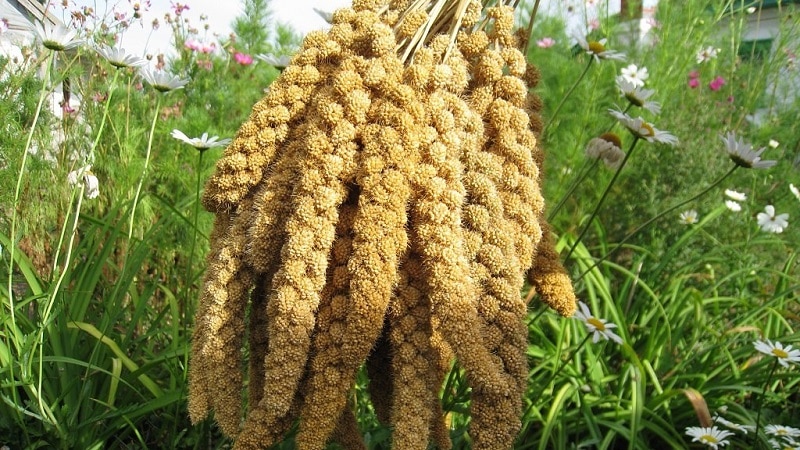
History of appearance
Mogar has been grown as an agricultural plant since the end of the 17th century.. Today it grows wild in Asian countries. As a cultivated plant, it is often grown in countries with subtropical and temperate climates. The main purpose is fodder.
Mogar is mainly imported by India and China.. There it is grown in mountainous areas at altitudes of up to 2000 m, where precipitation amounts to 500-700 mm per year.
This is interesting:
Varieties, classification and varieties of Italian millet
Scientific classification of culture:
- Kingdom - plants;
- Subkingdom – green plants;
- Department – flowering;
- Class – monocots;
- Family – cereals;
- Genus – bristlecone;
- Type – Mogar.
Mogar varieties included in State Register of the Russian Federation:
 Altai 23. Originator: FGBNU FANTSA;
Altai 23. Originator: FGBNU FANTSA;- Ascetic. Originator: Federal State Budgetary Educational Institution of Higher Education Saratov State Agrarian University;
- Atlant. Originator: FGBNU FNTs ZBK;
- Belsky. Originator: Federal State Budgetary Scientific Institution UFITs RAS;
- Kabir. Originator: Federal State Budgetary Scientific Institution SK Research Institute of State Academy of Agriculture, admission region: Central Black Sea Region, North Caucasus, Middle Volga, Lower Volga, Far East;
- Handsome. Originator: Federal State Budgetary Educational Institution of Higher Education Saratov State Agrarian University;
- Scythian. Originator: FGOU VPO ChSAU;
- Stamoga. Originator: Federal State Budgetary Institution "North Caucasian Federal National Research Center";
- Stepnyak 1. Originator: FGBNU "NIIAP Khakassia";
- Stoic. Originator: Federal State Budgetary Educational Institution of Higher Education Saratov State Agrarian University.
Important! All varieties except the Kabir variety are zoned in all regions of Russia.
Chemical composition, trace elements, calorie content of Italian millet
People consume millet as a dietary product.
Mogar's value is great thanks to a rich vitamin-mineral complex and more:
- High protein content.
- The protein contains the amino acid tryptophan, which promotes the body's production of the happiness hormone - serotonin.
- Good for diabetics due to its high fiber content, which slows down the absorption of carbohydrates, thereby preventing spikes in blood sugar.
- Magnesium, which is part of the grain, normalizes blood pressure.
- The increased content of B vitamins promotes the breakdown of fats, turning them into carbohydrates.
Mogar calories: per 100 g there are 342 kcal.
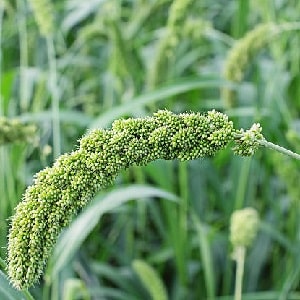 The nutritional value:
The nutritional value:
- proteins – 11.5 g;
- fats – 3.3 g;
- carbohydrates – 66.5 g;
- dietary fiber – 3.6 g;
- water – 14 g.
Mogar is rich in vitamins such as: vitamin B9 – 40 mg, vitamin B1 – 40 mg, vitamin A – 3 mg, vitamin PP – 4.6 mg. Contains macro- and microelements: phosphorus – 223 mg, potassium – 211 mg, magnesium – 83 mg, sulfur – 77 mg, aluminum – 100 mg, copper – 370 mg.
Important! The only contraindications for using Mogar are allergies and individual intolerances.
Who can you feed Italian millet?
Mogar is a crop that is beneficial for both animals and humans.
It is given to animals as:
- green food in summer;
- straw in winter;
- ground grain in any season;
- whole grain for birds.
Mogara grain is used in the food industry. They cook porridge from it. The rules for preparing porridge do not differ from traditional ones. They make both sweet and salty porridge, using milk or water.
The grains are used to make flour, which has a unique and slightly piquant taste. Bakery products and pasta are baked from flour. Products from Mogar taste like rye bread.
Raw food lovers sprout Mogar grains and add them to salads and various vegetable dishes.
In the alcohol industry, Italian millet grains are used to make wine or beer.
Features of growing in open ground
Mogar is a drought-resistant and heat-loving crop. Seed germination begins at a temperature of +8…+10°C.
Important! Frosts below -2°C damage Mogar seedlings.
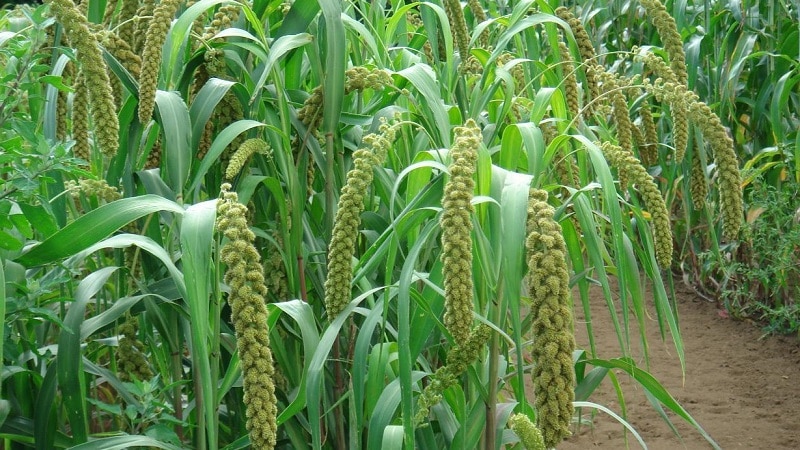
When grown in favorable conditions, the yield reaches:
- green mass 100-250 centners per hectare;
- hay 25-65 quintals per 1 ha;
- grain reaches 20-25 quintals per 1 ha.
The plant prefers loose, unclogged soil.
Choosing a landing site
For planting Italian millet, choose light soils with added sand.. The plant will not grow in marshy or shale soils.
The best predecessors for Mogar - legumes and row crops.
Important! In an area protected from wind erosion by forest strips, the crop produces maximum yield.
Soil preparation
Tillage takes place in several stages:
- In the autumn, after harvesting the predecessor, the main soil cultivation is carried out. Plowed to a depth of 18-20 cm with the addition of organic fertilizers 10-20 t/ha together with superphosphate 2-3 c/ha and potassium salt 1-2 c/ha.
- Early spring - cultivation.
- Secondary cultivation with harrowing immediately before sowing.
Important! When cultivating the soil, it is necessary to remove weeds, since Mogar is characterized by slow growth at the beginning of the growing season.
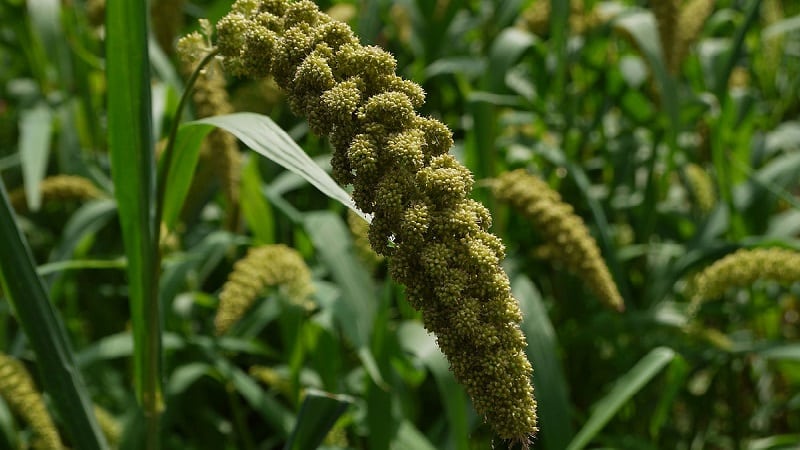
Seed preparation
The quality and quantity of the harvest is largely determined by the condition of the seed material.
Seed preparation is carried out in several stages:
- Etching. The drug "Granozan" is used as a disinfectant. Use at the rate of 1 kg per 1 ton of seeds. This measure reduces smut damage and increases field germination of seeds.
- Sorting from impurities and calibration, for which a saline solution is used: 30 g of table salt per 1 liter of warm water. The seeds are lowered and kept for 10 minutes. During this time, empty and weak grains will float to the surface, while healthy ones will remain at the bottom.
- Air-thermal heating. Carried out within 5-6 days before sowing. For heating, the seeds are scattered on a tarpaulin under a canopy and mixed every 2 hours.
- Vernalization of seeds. Increases plant resistance to frost and disease. The growing season is shortened. To do this, the seeds are placed in a cold place for a short period. After the seeds hatch, dry and sow.
Important! Only well-cleaned seeds with standard germination and subjected to air-thermal heating can be vernalized.
Planting scheme and technology
Well-dried and prepared seeds are used for sowing.
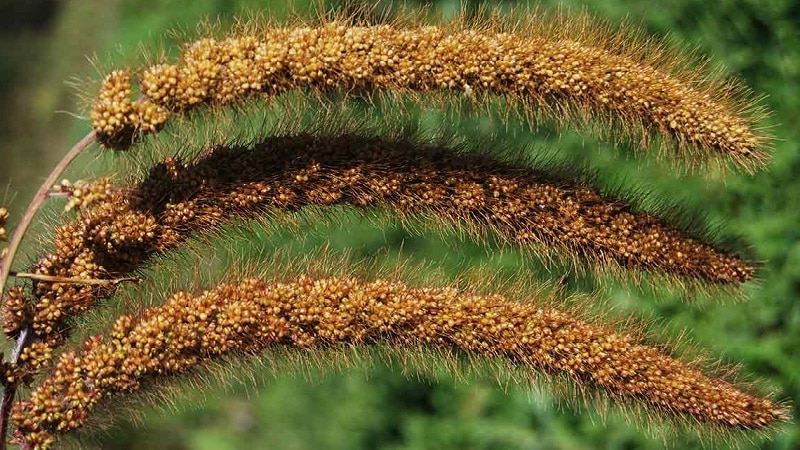
Sowing:
- for hay: a continuous row method is used, with a seeding rate of 15-20 kg/ha;
- for grain: use the wide-row method (45 cm × 15 cm) at a rate of 8-10 kg/ha.
Seed placement depth – 3-5 cm. Sowing is carried out in moist soil when the arable layer warms up to 10-12°C.
Sowing dates:
- for hay and grain: late April – mid-June;
- for green mass: in mid-July.
Important! When sowing seeds early, seedlings appear late, and the field is overgrown with weeds. Sprouts are susceptible to spring frosts. If sowing is late due to drying out of the soil, seedlings will be uneven and the root system will be weak.
Treatment against diseases and pests
Correct and timely agrotechnical and chemical treatment of crops will help to achieve success in obtaining a high-quality harvest.
Mogar crops are susceptible to diseases such as: smut, striped and streaky bacteriosis, melanosis. Crop pests include bread flea, cicadas and thrips.
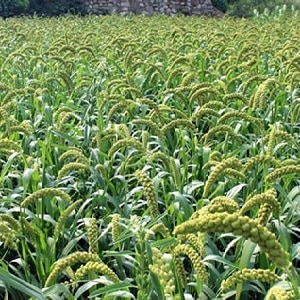 For chemical treatment of crops against diseases and pests such schemes are used:
For chemical treatment of crops against diseases and pests such schemes are used:
- In the period after germination until tillering, they are sprayed against bread flea beetles with the chemical preparation "Metaphos" at the rate of 0.5-1 liters per hectare.
- Treatment against thrips is carried out during the period of emergence into the tube - sweeping. The drug “Karbofos” is used at a rate of 0.5-1.2 liters per hectare or “Metafos” in a volume of 0.5-1 liters per hectare.
- For diseases, the “Granozan” seed treatment method is used.
Important! Chemical methods of protection are used as a last resort if agricultural measures do not help.
Features of care
After sowing, rolling is carried out. It promotes better contact of seeds with soil. When the first shoots appear, inter-row harrowing of crops is carried out to a depth of 4-5 cm in order to weed and loosen the soil.
After 10-15 days, the second harrowing of the crops is carried out. During the same period, fertilizing with organo-mineral fertilizer is carried out in an amount of 1-2 c per hectare. It is also recommended to use: slurry (4-5 tons per hectare), bird droppings (4-5 tons per hectare), ash (3-5 tons per hectare)
The crop is harvested using a combine harvester.:
- for hay - in the sweeping phase;
- for grain – in the phase of full ripeness.
Read also:
Tips and tricks for growing and using Italian millet
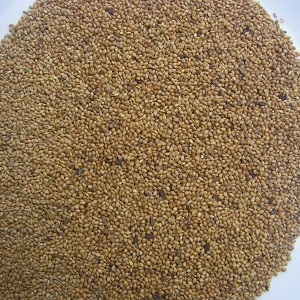 PWhen growing Italian millet it is recommended:
PWhen growing Italian millet it is recommended:
- in arid areas, carry out snow retention measures;
- protect fields with crops with forest belts;
- do not sow on acidic soils;
- To obtain large yields, grow on fertile, loose soils.
Specialists recommend that people use Italian millet for:
- retention of undigested food;
- clogging of the stomach, accompanied by bloating and bad breath;
- weakening of the spleen and stomach;
- anorexia (consume sprouted seeds).
Important! The norm of sprouted millet per day is 9-15 g of seeds.
Conclusion
Italian millet has many beneficial properties. The elements that make up its seeds have a positive effect on human health. And when used as a forage crop, Mogar will significantly strengthen the food supply of the farm.